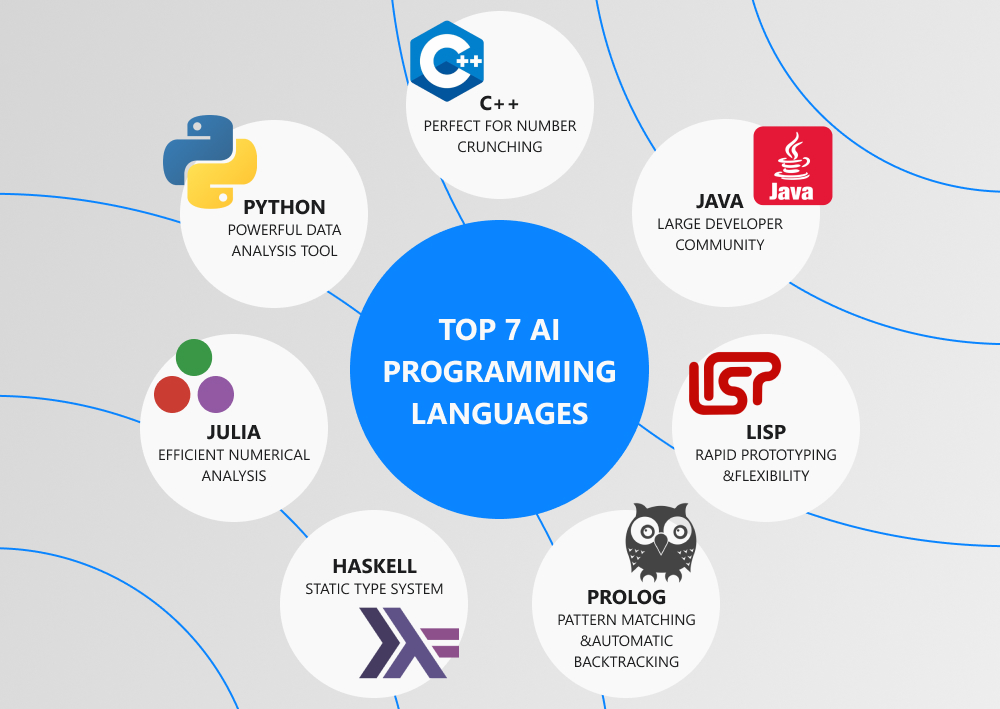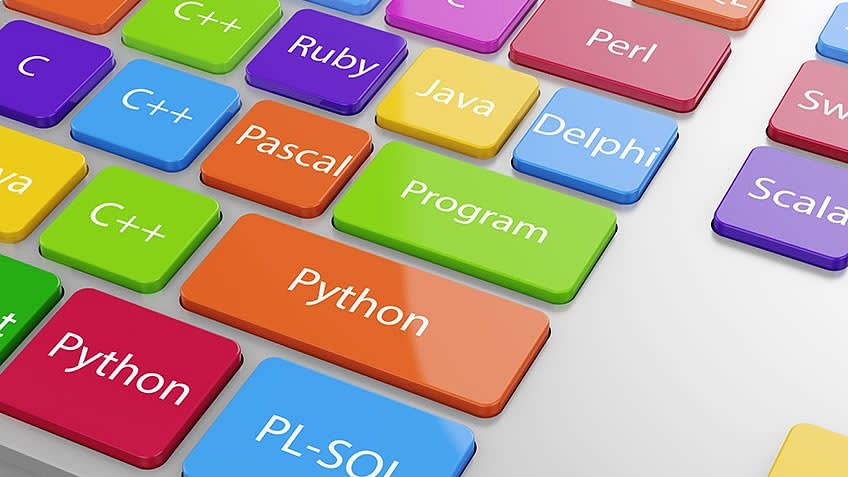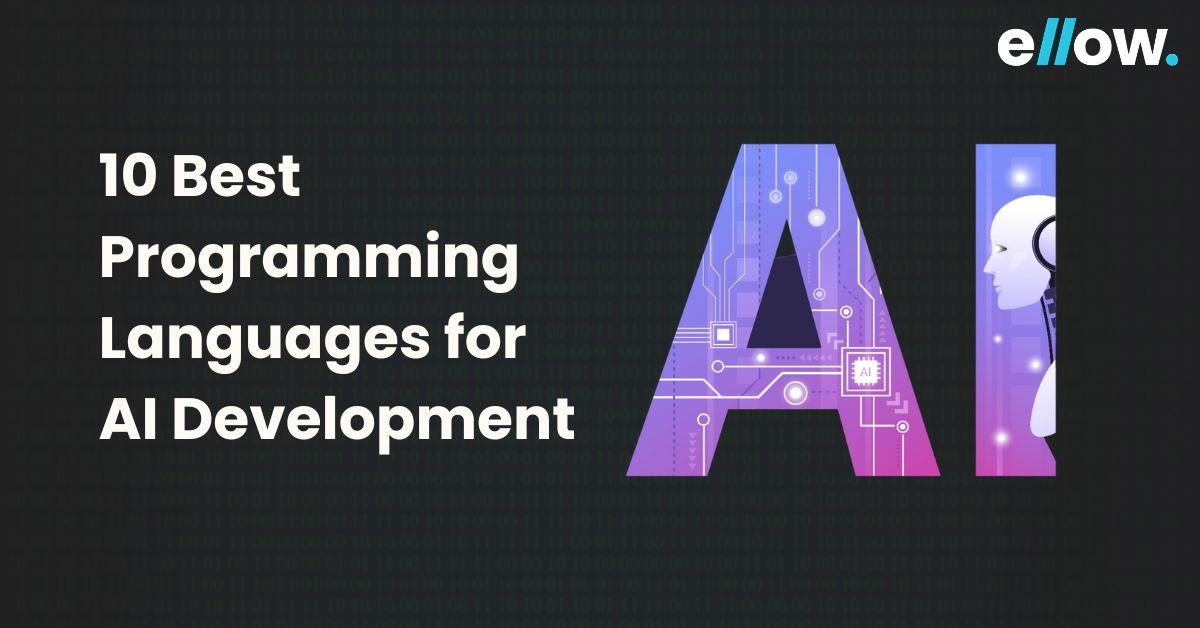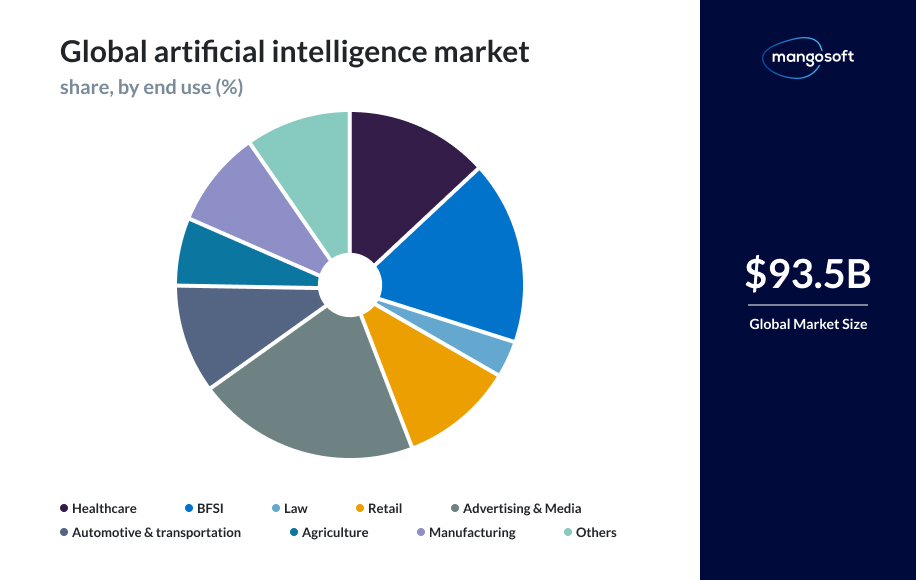Top Programming Language For Artificial Intelligence(ai)|Updated(2024)
Introduction to Artificial Intelligence Programming Languages

Artificial Intelligence programming languages are specifically designed to facilitate the development of AI solutions. These languages provide the necessary tools and syntax to implement algorithms, process data, and build intelligent systems. The field of AI programming languages encompasses a range of options, each with its own strengths and features. Python, Java, R, and TensorFlow are some of the popular languages used in AI development.
Python is widely recognized for its simplicity, readability, and extensive libraries for data analysis and machine learning. Java offers the advantage of platform independence, making it suitable for large-scale AI applications. R is particularly adept at statistical computing and data analysis, making it useful for AI tasks that require complex data manipulation. TensorFlow, an open-source library, is highly versatile for building deep learning models and executing AI algorithms.
Selecting the right programming language is crucial for successful AI development and achieving desired outcomes.
Overview of programming languages for artificial intelligence

There are several programming languages available for artificial intelligence (AI) development. Each language offers its own set of features and benefits for building intelligent systems. Python is widely regarded as one of the most popular languages for AI programming due to its simplicity, readability, and extensive libraries for data analysis and machine learning. Java is another prominent language that offers platform independence, making it suitable for large-scale AI applications. R, on the other hand, excels in statistical computing and data analysis, making it ideal for complex data manipulation tasks in AI. Finally, TensorFlow, an open-source library, is highly versatile for building deep learning models and executing AI algorithms. Selecting the right programming language is crucial for successful AI development and achieving desired outcomes.
Importance of selecting the right programming language for AI development

Choosing the right programming language is crucial for AI development as it directly impacts the efficiency and effectiveness of the AI system. Each programming language has its own unique features and capabilities that can greatly enhance the development process. By selecting the appropriate language, developers can have access to a wide range of libraries, frameworks, and tools specifically designed for AI tasks, such as data analysis, machine learning, and deep learning. Additionally, the chosen language should align with the project requirements, scalability, performance, and the individual skills of the development team. The right programming language ensures smoother implementation, better code maintainability, and faster development cycles, ultimately leading to successful AI projects.
Python for Artificial Intelligence
Python has emerged as one of the top programming languages for artificial intelligence (AI) development. Its simplicity and versatility make it a popular choice among developers. Python offers an extensive range of libraries and frameworks that simplify complex AI tasks. This includes popular libraries like NumPy, pandas, and scikit-learn, which provide tools for data analysis and manipulation. Additionally, Python's support for machine learning frameworks like TensorFlow and PyTorch has made it a preferred language for developing and deploying AI models. Its clean syntax and large developer community also contribute to its success in the AI field. Python's flexibility and ease of use make it an ideal language for AI projects of any scale or complexity.
Benefits of using Python for AI development
Python is widely regarded as one of the best programming languages for artificial intelligence (AI) development due to its numerous benefits. Firstly, Python is known for its simplicity and readability, making it easier for developers to write and understand code. This allows for faster development and debugging of AI solutions. Additionally, Python offers a vast array of libraries and frameworks specifically designed for AI, such as NumPy, pandas, and scikit-learn. These libraries provide powerful tools for data analysis, manipulation, and machine learning. Moreover, Python's support for popular AI frameworks like TensorFlow and PyTorch allows for seamless integration and implementation of complex AI models. Lastly, Python has a large and active developer community, ensuring continuous support, updates, and resources for AI projects.
Popular Python libraries and frameworks for AI projects
Java for Artificial Intelligence

Java is a widely-used programming language that also finds applications in the field of Artificial Intelligence (AI). It offers several advantages for AI development. With its strong object-oriented programming features and robust ecosystem, Java provides developers with a reliable and scalable platform for building AI solutions. Java's extensive libraries, such as Apache Mahout and WEKA, offer powerful tools for machine learning and data analysis. Moreover, Java's multi-threading capabilities allow for efficient parallel processing, making it suitable for handling large datasets in AI projects. Additionally, Java's platform independence allows AI applications developed in Java to run seamlessly across different operating systems. Overall, Java provides a flexible and reliable choice for AI programming, making it a popular language in the field.
Advantages of Java in AI programming
Java offers several advantages for AI programming. Firstly, it is a widely-used and well-established programming language with a strong ecosystem and community support. This makes it easier for developers to find resources and solutions when working on AI projects. Secondly, Java's object-oriented programming features allow for modular and scalable code, which is essential when dealing with complex AI algorithms and models. Additionally, Java's extensive libraries, such as Apache Mahout and WEKA, provide powerful tools for machine learning and data analysis. Java's multi-threading capabilities also enable efficient parallel processing, making it suitable for handling large datasets in AI applications. Lastly, Java's platform independence allows AI solutions developed in Java to run seamlessly across different operating systems. Overall, Java provides a reliable and flexible platform for AI programming.
Applications of Java for developing AI solutions
Java is a versatile programming language that finds extensive applications in the field of Artificial Intelligence (AI) development. One of the key areas where Java is used in AI is in the development of intelligent systems and machine learning algorithms. Java's object-oriented nature and extensive libraries like Apache Mahout and WEKA make it well-suited for implementing complex AI algorithms and models. Additionally, Java's multi-threading capabilities enable efficient parallel processing, making it ideal for handling large datasets in AI applications. Java is also commonly used in natural language processing (NLP) tasks, such as text analysis and sentiment analysis. Overall, Java offers a reliable and flexible platform for developing a wide range of AI solutions.
R for Artificial Intelligence:
R, a powerful programming language, is gaining popularity in the field of Artificial Intelligence (AI) due to its capabilities in statistical computing and data analysis. With its extensive libraries and packages, R provides a robust platform for AI tasks such as machine learning and predictive modeling. R's flexibility and compatibility with other AI tools make it a preferred language for data scientists and researchers. It offers a wide range of statistical techniques for data preprocessing, exploration, and visualization. The language's strong support for data manipulation and transformation makes it ideal for handling large datasets. Overall, R proves to be a valuable programming language for AI applications, especially in the realm of data analytics and statistical computing.
Capabilities of R in statistical computing for AI

R is well-regarded for its capabilities in statistical computing, making it a popular choice for AI applications. With its vast array of libraries and packages, R provides a robust platform for conducting statistical analysis and modeling. It offers a wide range of statistical techniques for data preprocessing, exploration, and visualization, allowing data scientists to effectively analyze and interpret large datasets. R's flexibility and compatibility with other AI tools enable seamless integration with machine learning algorithms and predictive modeling. Moreover, R's ability to handle complex statistical computations and implement advanced statistical models makes it an ideal choice for developing AI solutions. Overall, R's powerful statistical computing capabilities make it a valuable programming language for AI applications, particularly in the field of data analysis and statistical modeling.
R's suitability for machine learning and data analysis in AI

R is highly suitable for machine learning and data analysis in AI due to its robust statistical capabilities. It offers a wide range of libraries and packages specifically designed for machine learning, such as caret and MLR, making it easy to implement various algorithms and models. R's extensive support for data manipulation and visualization enables efficient data preprocessing and exploration. Additionally, R provides powerful statistical techniques, including regression, clustering, and classification, which are essential for developing AI solutions. Its compatibility with other AI tools and languages, such as Python and TensorFlow, further enhances its suitability for machine learning tasks. Overall, R's rich functionality and flexibility make it an excellent choice for data analysis and machine learning in the field of AI.
TensorFlow for Artificial Intelligence
TensorFlow is a widely used open-source library developed by Google for artificial intelligence and machine learning. It plays a crucial role in AI development, offering a range of features and functionalities that enable the creation of powerful AI models.
One of the key advantages of TensorFlow is its ability to handle large-scale datasets efficiently, making it ideal for training complex deep learning models. It provides a high-level API that simplifies the process of building neural networks, allowing developers to focus on model architecture rather than implementation details.
TensorFlow also offers support for distributed computing, allowing the training of models across multiple machines or GPUs, which accelerates the learning process. Its extensive ecosystem includes pre-trained models, visualization tools, and deployment options, making it a comprehensive platform for AI development.
Overall, TensorFlow empowers developers to leverage the potential of artificial intelligence and build sophisticated AI solutions with ease.
Introduction to TensorFlow and its role in AI development

TensorFlow is an open-source library developed by Google, specifically designed for artificial intelligence and machine learning. It plays a crucial role in AI development by providing a comprehensive platform for building and training AI models. TensorFlow is especially known for its efficient handling of large-scale datasets, making it ideal for training complex deep learning models. With its high-level API, TensorFlow simplifies the process of creating neural networks, allowing developers to focus on model architecture rather than implementation details. Additionally, TensorFlow offers support for distributed computing, enabling the training of models across multiple machines or GPUs. Its extensive ecosystem includes pre-trained models, visualization tools, and deployment options, making it a powerful tool for AI development.
Features and functionalities of TensorFlow for building AI models

TensorFlow offers a wide range of features and functionalities that make it a powerful tool for building AI models. It provides a high-level API that simplifies the process of creating and training neural networks, allowing developers to focus on the architecture and design of their models. TensorFlow also supports distributed computing, enabling the training of models across multiple machines or GPUs for efficient processing of large-scale datasets. Additionally, TensorFlow offers pre-trained models that can be used for various AI tasks, such as image recognition and natural language processing. It also provides powerful visualization tools for understanding and analyzing the performance of AI models. With these features, TensorFlow empowers developers to build sophisticated AI models with ease and efficiency.
Conclusion

In conclusion, choosing the right programming language for artificial intelligence projects is crucial for success. Python stands out as a popular language due to its simplicity, extensive libraries, and strong community support. It is widely used for AI development, especially in areas such as machine learning and natural language processing. Java, on the other hand, offers advantages in terms of performance and scalability, making it suitable for developing AI solutions that require high computational power. R excels in statistical computing and data analysis, making it an ideal choice for AI applications that heavily rely on these capabilities. Lastly, TensorFlow empowers developers with its advanced features and functionalities for building AI models effortlessly. As the field of AI continues to evolve, it is essential to stay updated with the latest trends and advancements in programming languages to harness the full potential of artificial intelligence.
Key considerations when choosing a programming language for AI projects

When selecting a programming language for AI projects, there are several key considerations to keep in mind. Firstly, compatibility with existing systems and libraries is crucial to ensure seamless integration and maximize efficiency. Additionally, the language should have strong support for machine learning algorithms and data manipulation, as these are fundamental aspects of AI development. Another important factor is the availability of a thriving community and ample resources, such as tutorials and documentation, which can aid developers in their learning and troubleshooting processes. Scalability and performance are also critical considerations, especially when dealing with large datasets or computationally intensive tasks. Lastly, it is essential to consider the future trends and advancements in AI programming languages to ensure long-term viability and adaptability.
Future trends in AI programming language

Future trends in AI programming language are constantly evolving and shaping the landscape of artificial intelligence development. One trend to watch is the rise of specialized AI programming languages that are designed specifically for machine learning and deep learning tasks, offering enhanced performance and efficiency. Another trend is the integration of AI capabilities into existing popular programming languages, such as Python, Java, and R, making it easier for developers to incorporate AI functionalities into their projects. Additionally, the use of domain-specific languages (DSLs) in AI programming is gaining traction, allowing for more concise and expressive code that is tailored to specific AI applications. The future of AI programming languages is likely to be characterized by increased automation, improved scalability, and the development of more user-friendly tools and frameworks.
